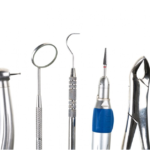Professional headshots play a crucial role in making a strong first impression in today’s competitive job market. A captivating headshot can significantly enhance a person’s professional image, helping them stand out to potential employers or clients. This type of photography reflects not only the individual’s personality but also their professionalism and commitment to their career.
Preparing for a headshot session involves several steps that can lead to the best results. From choosing the right outfit to ensuring proper lighting, each detail matters in capturing a stunning image. Selecting a skilled photographer who understands the nuances of headshot photography can also make a difference in the overall quality of the session.
Investing time and effort into creating an impressive headshot pays off, especially when combined with thoughtful post-production work. A polished photograph can open doors to new opportunities and create lasting professional connections.
The Importance of Professional Headshots
Professional headshots play a crucial role in shaping one’s image in the business world. A quality photo not only enhances personal branding but also serves as an essential marketing tool. Here are some critical areas where professional headshots have a significant impact.
Boosting Your Professional Image
A professional headshot communicates competence and seriousness. It shows that an individual values their career and is willing to invest in their image. In industries like sales or consulting, where trust is key, a polished photo can set the right tone.
Key aspects include:
- Clarity: The photo should clearly show the person’s face.
- Appropriate Attire: Dressing smartly conveys professionalism.
- Positive Demeanor: A warm smile can make one appear more approachable.
When clients or potential employers see a high-quality image, they are more likely to perceive the individual as credible and trustworthy.
Essential for Online Presence
In today’s digital age, an online presence is vital. Social media platforms like LinkedIn have become essential for networking and job searching.
A compelling headshot enhances profiles, making them more inviting.
Consider these tips:
- Consistency: Using the same headshot across platforms helps with recognition.
- Background: A clean, simple background keeps the focus on the person.
- Resolution: High-resolution images look more professional and engaging.
An effective online presence can lead to more connections, opportunities, and visibility in the career landscape.
Influence on Career Opportunities
The right headshot can open doors to new opportunities. When professionals apply for jobs or seek promotions, first impressions matter. A quality headshot can make a candidate stand out.
Some influencing factors are:
- Recruiter Perception: Recruiters often favor candidates with professional images in their applications.
- Networking: Building a professional network becomes easier when one presents a polished image.
- Brand Representation: For entrepreneurs, a headshot reflects their brand’s values and professionalism.
A strong headshot can serve as a bridge to potential career growth by creating a positive impression.
Preparing for Your Headshot Session
Preparation is key to achieving great professional headshots. Making careful choices about clothing, grooming, and behavior can significantly impact the final results.
Choosing the Right Attire
Selecting the right outfit is essential for a professional headshot. Neutral colors like navy, gray, and black are preferred. They provide a nice contrast against most backgrounds.
Tips for Attire:
- Fit Matters: Clothes should fit well but not be too tight or loose. This creates a flattering look.
- Avoid Busy Patterns: Simple designs keep the focus on the face.
- Layer Up: Adding a blazer or sweater can enhance the professional look.
- Stay True to Your Brand: Choose outfits that represent your personal or professional style.
Makeup and Grooming Tips
Proper grooming can make a noticeable difference in how a headshot turns out. It’s important to approach makeup and hair with care.
Makeup Guidelines:
- Keep it Natural: Aim for a clean and fresh look. Use foundation to even out skin tones and minimize shine.
- Focus on Eyes: Highlight the eyes with subtle eyeliner and mascara to make them stand out.
- Avoid Flashy Colors: Stick to muted tones for lipstick and blush to maintain a professional appearance.
Grooming Advice:
- Hair Style: Neat hair is vital. A simple hairstyle that frames the face is often best.
- Facial Hair: For men, trimming facial hair helps to create a polished look.
Before the Session: Do’s and Don’ts
Pre-session preparation is crucial for reducing stress and enhancing results. Planning ahead can help avoid common pitfalls.
Do’s:
- Practice Expressions: Spend a few minutes in front of a mirror to find the right smiles and expressions.
- Stay Hydrated: Drinking water can help skin look fresh and vibrant.
- Get Plenty of Rest: A good night’s sleep before the shoot can minimize dark circles and improve appearance.
Don’ts:
- Avoid Heavy Meals: Eating too much before the session can cause discomfort.
- Don’t Try New Products: Stick to familiar products for makeup and grooming to avoid skin reactions.
Technical Aspects of Headshot Photography
In headshot photography, technical details play a crucial role in achieving a polished final image. Lighting, camera selection, and posing techniques are key areas to focus on for professional results.
Lighting and Background Choices
Good lighting highlights facial features and sets the mood for the headshot. Natural light works well, but soft, diffused artificial lighting can offer consistent results.
Types of Lighting:
- Rembrandt Lighting: Creates a triangle of light on one cheek and is flattering for most faces.
- Butterfly Lighting: Produces shadows under the chin for a glamorous effect.
Backgrounds should be simple and non-distracting. Neutral colors like gray or soft blues work well. Avoid busy patterns that can divert attention from the subject. A blurred background (bokeh effect) can enhance focus on the face.
Camera Equipment and Settings
Selecting the right camera and settings is vital for capturing detail. A DSLR or mirrorless camera is ideal, with a good prime lens for sharp focus.
Recommended Settings:
- Aperture: f/2.8 to f/5.6 keeps the subject sharp while softening the background.
- Shutter Speed: At least 1/200 to prevent blurring from movement.
Using a tripod can help maintain stability. Always consider the camera’s ISO settings. Lower ISO numbers reduce noise, while higher numbers can be used in low-light conditions.
Posing Techniques
Posing helps convey personality and professionalism. The subject should feel comfortable to portray confidence in the shot.
Key Posing Tips:
- Angle: Have the subject slightly turn their body away from the camera for a more dynamic look.
- Chin Position: Encourage the subject to extend their chin slightly forward and downward to prevent double chins.
Direct the subject to relax their shoulders and position their arms naturally. Candid smiles work better than forced ones. Experiment with different poses to find the most flattering angles.
Selecting the Right Photographer
Choosing a photographer for professional headshots can significantly impact how one is perceived in various professional settings. It is essential to consider several key factors, including experience, style, and cost.
Experience and Portfolio
Experience plays a vital role in selecting a photographer. A photographer with a strong background in headshots is likely to understand lighting, angles, and poses that work best.
When reviewing portfolios:
- Look for diversity in the images.
- Check for consistency in quality.
- Ensure the photographer has experience in your industry.
Many photographers display their previous work on websites. This allows potential clients to see if their style aligns with what they desire.
Asking for references can also provide insight into a photographer’s reliability and professionalism.
Understanding Photographer Styles
Different photographers have unique styles that can affect the outcome of headshots. Some may prefer a more traditional look, while others might lean towards a candid or creative approach.
Potential clients should think about the impression they want to make.
To determine a photographer’s style:
- Browse their portfolio and note specific traits.
- Review the moods and themes of previous headshots.
It can also be helpful to communicate preferences upfront. A good photographer will be able to adapt their style to meet specific needs.
Evaluating Cost and Value
Cost is an important factor when choosing a photographer but should not be the only consideration. Prices can vary widely based on location, experience, and the services included.
When evaluating cost, consider:
- What is included in the package (e.g., number of edits, background options).
- Turnaround time for receiving the images.
It is essential to balance cost with quality. Sometimes investing a bit more can lead to better results and satisfaction. Remember, headshots are often an investment in personal branding.
Post-Production and Final Touches
Post-production is crucial for enhancing the quality of professional headshots. This stage involves editing, selecting the best images, and ensuring proper delivery formats and rights. Each step adds value and polish to the final product.
Editing and Retouching Basics
Editing headshots begins with basic adjustments. Photographers often adjust exposure, contrast, and color balance to achieve a natural and engaging look.
Retouching includes:
- Skin smoothing: This helps reduce blemishes while keeping a natural appearance.
- Background adjustments: Removing distractions ensures the focus remains on the subject.
Using software like Adobe Photoshop or Lightroom, professionals can enhance images through cropping or applying filters. These edits strengthen the professional image, making it more eye-catching for viewers.
Choosing the Best Shots
Selecting the best shots is essential for effective headshots. After a photoshoot, photographers review all captured images. They look for key features such as:
- Facial expression: A confident smile or approachable look is important.
- Lighting quality: Good lighting can accentuate features and improve overall quality.
Photographers often recommend having a variety of shots. This helps clients choose images that reflect their personality or brand. It’s also useful to consider different styles, such as formal or casual, which can appeal to various audiences.
Delivery Formats and Usage Rights
Understanding delivery formats and usage rights is vital. Professional headshots should be provided in multiple formats, such as JPEG and PNG, for versatility across platforms.
Common usage rights include:
- Personal use: Allows the client to use the image in resumes or social media.
- Commercial use: Requires an agreement if the image will be used for marketing or business purposes.
Photographers often provide contracts detailing these rights. This protects both parties and ensures proper usage of the images. By discussing these details in advance, clarity is achieved, avoiding any potential misunderstandings.




